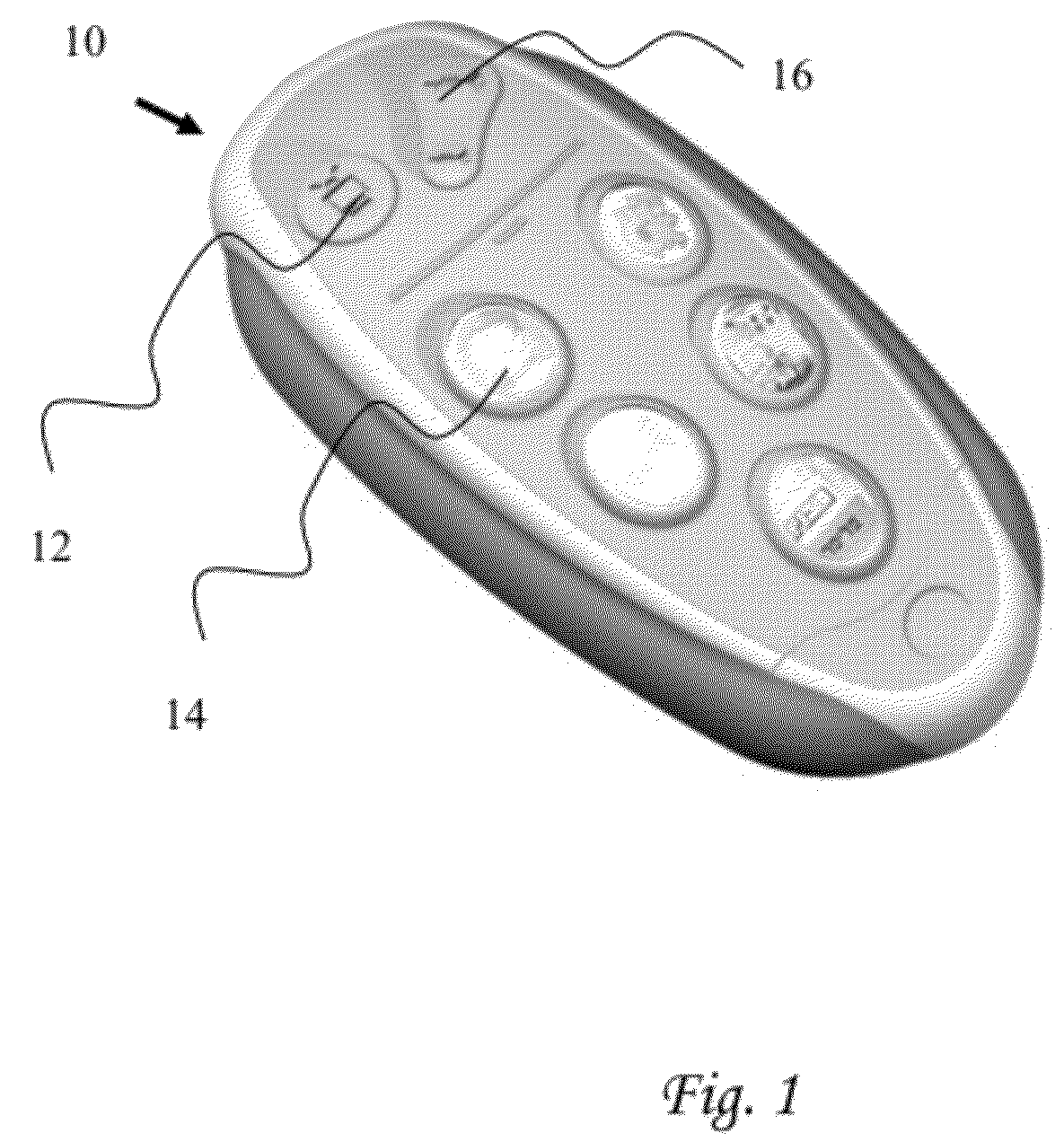Ergonomic learning remote control
a remote control and ergonomic technology, applied in the field of remote controls, can solve the problems of not being designed to withstand careless use by users, not being highly insulated, and being susceptible to liquid damage, so as to improve the identification of buttons and avoid slippage
- Summary
- Abstract
- Description
- Claims
- Application Information
AI Technical Summary
Benefits of technology
Problems solved by technology
Method used
Image
Examples
Embodiment Construction
[0107]The following description is provided, alongside all chapters of the present invention, so as to enable any person skilled in the art to make use of said invention and sets forth the best modes contemplated by the inventor of carrying out this invention. Various modifications, however, will remain apparent to those skilled in the art, since the generic principles of the present invention have been defined specifically to provide uniquely designed, programmable TV remote control specially customized and adapted for the use and handling of toddlers and preschoolers
[0108]A parentally superintended control unit (PSCU) is disclosed. Hereinafter the term “parentally superintended” refers to an embodiment of the invention wherein although there is overall chaperoning or superintending by the parent of the choices available to the control unit, the toddler has freedom of choice within the parameters of choice, or within a range, set by the parent.
[0109]Graphical user interface (GUI) i...
PUM
 Login to View More
Login to View More Abstract
Description
Claims
Application Information
 Login to View More
Login to View More - R&D Engineer
- R&D Manager
- IP Professional
- Industry Leading Data Capabilities
- Powerful AI technology
- Patent DNA Extraction
Browse by: Latest US Patents, China's latest patents, Technical Efficacy Thesaurus, Application Domain, Technology Topic, Popular Technical Reports.
© 2024 PatSnap. All rights reserved.Legal|Privacy policy|Modern Slavery Act Transparency Statement|Sitemap|About US| Contact US: help@patsnap.com









